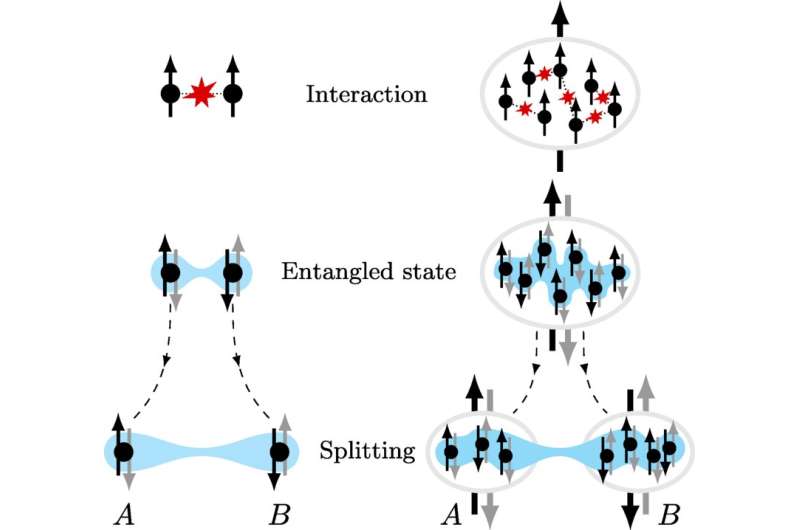June 12, 2023 report
This article has been reviewed according to Science X's editorial process and policies. Editors have highlighted the following attributes while ensuring the content's credibility:
fact-checked
peer-reviewed publication
trusted source
proofread
Experiment shows Einstein-Podolsky-Rosen paradox scales up

A group of physicists at the University of Basel, in Switzerland, has found via experimentation that the Einstein-Podolsky-Rosen paradox still holds even when scaled up. Paolo Colciaghi, Yifan Li, Philipp Treutlein and Tilman Zibold describe their experiment in Physical Review X.
In 1935, Albert Einstein, Boris Podolsky and Nathan Rosen published a paper outlining a thought experiment that suggested that quantum mechanics did not give a complete description of reality. They argued for the existence of "elements of reality" that were not part of quantum theory—and then went further by speculating that it should be possible to come up with a new theory that would contain such hidden variables.
Their experiment has since come to be known as the EPR paradox because of the contradictions it reveals, such as one particle in a system influencing other particles due to entanglement, and also that it can become possible to know more about the particles in a given system than should be allowed by the Heisenberg uncertainty principle.
Several years later, John Bell developed what has come to be known as the Bell test as a means of testing the EPR paradox—up until now, it has involved small entangled systems using pairs of photons or atoms. In this new effort, the research team has shown that the same sort of experiment can be scaled up to a larger system using Bose-Einstein condensates.
In their experiment, the group began by generating a cloud made up of rubidium-87 atoms. They then generated an interaction between the atoms in the cloud forcing them to become an entangled Bose-Einstein condensate. They then released the condensate into two separate clouds where the pseudospins were entangled. They concluded by measuring the "pseudospins" of the two clouds—each of which held hundreds of rubidium-87 atoms—independently. They found that the properties of the two clouds could not be correlated in a way attributable to chance and thus that the EPR paradox holds even when scaled up.
The research group suggests that in addition to their findings, the experiment could serve as a template for conducting other quantum metrology applications.
More information: Paolo Colciaghi et al, Einstein-Podolsky-Rosen Experiment with Two Bose-Einstein Condensates, Physical Review X (2023). DOI: 10.1103/PhysRevX.13.021031
Journal information: Physical Review X
© 2023 Science X Network




















